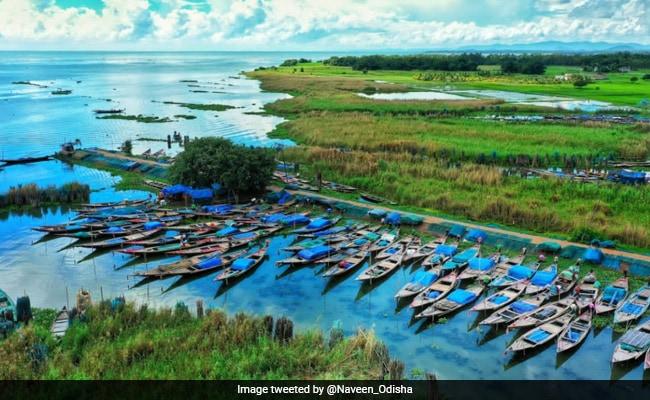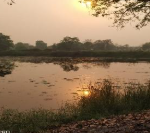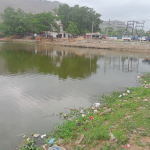
Introduction
Odisha, a state located in the northeastern part of India, is known for its rich cultural heritage and natural beauty. The state is home to numerous pilgrimage and tourism sites, attracting millions of visitors each year. The diverse landscape of the region encompasses serene beaches, lush forests, ancient temples, and vibrant festivals. The rapid growth in tourism has raised concerns about environmental degradation and sustainability. The need for sustainable practices in pilgrimage and tourism areas has become paramount.
Background of Odisha
Odisha is situated on the eastern coast of India, boasts a rich history dating back to ancient times. Before India became independent in 1947, Odisha’s capital was at Cuttack. The present capital, Bhubaneswar, was subsequently built in the vicinity of the city’s historic temples. Odisha is the 9th largest state by area, and the 11th largest by population. The state is known for its diverse culture, rich history, and a plethora of places of worship of different religions. The state is renowned for its numerous temples, each narrating a tale of architectural brilliance and religious significance. The Jagannath Temple in Puri, dedicated to Lord Jagannath, is one of the most famous pilgrimage sites in the country. The Sun Temple in Konark, a UNESCO World Heritage Site, is another architectural marvel attracting tourists from around the world.
Apart from religious sites, Odisha offers diverse landscapes, including the Chilika Lake, Asia’s largest brackish water lagoon, and the Simlipal National Park, a haven for biodiversity. The state’s cultural heritage is celebrated through various traditional dance forms, art, and festivals like the Rath Yatra in Puri, drawing visitors seeking an immersive experience.
Pilgrimage and Tourism Sites in Odisha
Odisha is home to several significant pilgrimage sites. The Jagannath Temple in Puri is an important Hindu temple dedicated to Jagannath, a form of Vishnu. Constructed in the 12th century, the temple is dedicated to Lord Jagannath, his brother Balabhadra, and sister Subhadra. The annual Rath Yatra, where the deities are taken on a grand procession, attracts millions of pilgrims and tourists. The temple is one of the original holy Char Dham Yatra of Hinduism. Another notable pilgrimage site is the Varahi Devi Temple at Chaurasi near Konark. These sites not only hold religious significance but also contribute to the state’s tourism. Recognized as a UNESCO World Heritage Site, the Konark Sun Temple is a masterpiece of Kalinga architecture. Dedicated to the Sun God, this 13th-century temple is known for its intricately carved sculptures and the famous chariot-shaped structure. The temple complex reflects the ancient Odishan art and cultural traditions.
Odisha boasts stunning natural beauty with its beaches, lakes, waterfalls, and forests. The state is also rich in history, culture, and art, and visitors can learn about its diverse tribal communities. From exploring the Konark Sun Temple to taking a boat ride on Chilika Lake, Odisha offers a range of activities for every type of traveler. The Chilika Lake is a haven for migratory birds, is the largest coastal lagoon in India. The lake, surrounded by picturesque landscapes, supports a rich biodiversity of flora and fauna. The presence of Irrawaddy dolphins further enhances the appeal of Chilika, making it a must-visit destination for nature enthusiasts.
Known as the ‘Temple City of India’, Bhubaneswar is home to several ancient temples, including the famous Lingaraja Temple. The city also houses the Udayagiri and Khandagiri Caves, which were once the dwelling retreats of Jain ascetics. The Satkosia Tiger Reserve is home to a diverse range of wildlife and offers stunning views of the Satkosia Gorge. Tikarpada Wildlife Sanctuary is located on the banks of the Mahanadi River, this sanctuary is known for its rich biodiversity and scenic beauty. The Bhitarkanika National Park is known for its mangrove ecosystem, this park is home to endangered species such as saltwater crocodiles and Olive Ridley turtles. Simlipal National Park, located in the Mayurbhanj district of Odisha, is one of the largest and oldest tiger reserves in India. This UNESCO Biosphere Reserve is home to a rich biodiversity, including the majestic Bengal tiger, Asian elephant, gaur, chausingha, and over 1000 species of plants.
Schemes in Odisha for Promoting Pilgrimage and Tourism
The state government has launched the “Baristha Nagarika Tirtha Yatra Yojana (BNTYY)” in collaboration with the Indian Railway Catering and Tourism Corporation (IRCTC) to help senior citizens over 60-75 years of age to undertake pilgrimage with Government assistance. The scheme offers a great opportunity to the poor and deprived senior citizens of the State for the realization of their lifelong dream of having one Tirtha Darshan (Pilgrimage) and fulfills their spiritual aspirations, with the support of the State.
The Government of Odisha has initiated various eco-tourism projects to promote sustainable practices. These projects focus on developing tourism infrastructure while ensuring minimal impact on the environment. Supporting and expanding such schemes can contribute to the preservation of natural habitats and cultural heritage.
Chilika Lake, being a vital ecological hotspot, has seen the implementation of the Clean Chilika Campaign. This initiative aims to maintain the cleanliness of the lake and its surroundings by involving local communities, tourists, and businesses. Similar campaigns can be extended to other significant pilgrimage and tourism sites in the state.
Promoting Green Pilgrimage and Green Tourism
The Government of Odisha has taken significant steps towards preserving biodiversity and promoting sustainable tourism by notifying three Biodiversity Heritage Sites (BHS) – Mandasaru Hills in Kandhamal district, Mahendragiri Hills in Gajpati district, and Gandhamardan Hills in Bolangir and Bargarh districts. These efforts aim to develop eco-guides capable of identifying rare and endangered species of flora and fauna, conserving indigenous species, and organizing trails and trekking routes to enhance awareness among eco-tourists.
Promoting eco-friendly pilgrimage and sustainable tourism starts with raising awareness among tourists, locals, and stakeholders. The implementation of educational programs highlighting the ecological significance of these sites and advocating for responsible tourism can foster a more conscientious approach. Maintaining the ecological balance of pilgrimage and tourism locations requires effective waste management, involving the installation of waste disposal bins, promoting recycling, and organizing clean-up initiatives. Collaborations with local communities and businesses can facilitate efficient waste management solutions. The incorporation of renewable energy sources like solar and wind power in and around pilgrimage sites can significantly reduce environmental impact. Adopting eco-friendly practices, such as using energy-efficient lighting and appliances, contributes to the overall sustainability of these destinations.
Community Engagement: Involving local communities in the preservation and promotion of pilgrimage and tourism sites nurtures a sense of responsibility. Providing skill development and employment opportunities empowers locals and encourages a shared commitment to sustainable practices.
Tourist Etiquette: Establishing a tourist code of conduct that underscores responsible behavior, such as refraining from littering, respecting local customs, and supporting eco-friendly initiatives, can contribute to a more sustainable tourism ecosystem.
Investment in Green Infrastructure: Collaborative efforts between the government and private sector to invest in sustainable infrastructure, including eco-friendly accommodations, transportation, and waste management systems, can accelerate the shift toward a more sustainable tourism industry. Incentivizing businesses that embrace green practices is essential for this transition.
Conclusion
Advocating for green pilgrimage and sustainable tourism in Odisha goes beyond environmental conservation; it also aims to enhance visitor experiences and provide sustainable livelihoods to local communities. Embracing eco-friendly practices becomes crucial to safeguard the cultural heritage and natural beauty of Odisha for future generations. The responsibility to promote and practice green tourism and pilgrimage lies collectively with the government, local communities, and visitors. Odisha’s pilgrimage sites and tourism destinations boast a harmonious blend of cultural richness and natural splendor, yet the escalating visitor numbers pose a threat to their ecological balance. Adopting a comprehensive approach that encompasses awareness, community participation, and sustainable practices is imperative to preserve Odisha’s unique heritage for the coming generations. By championing green pilgrimage and sustainable tourism, Odisha can serve as a model for responsible tourism, illustrating that cultural and environmental conservation can coexist seamlessly.

Chilika Lake the brackish water lagoon in the state is a UNESCO world heritage site
Article is written by: Anwesa Dutta
Anwesa Dutta, is an alumnus of TISS Tuljapur and St. Xaviers College, Mumbai. As a WASH consultant with UNICEF Odisha, she advocates for youth actions with Youth4Water Plus Campaign, addressing climate and water issues through engaging events.







